The 2012 World Jiu Jitsu Championships Case Study
A comprehensive study of the 2012 World Jiu Jitsu Championships, analyzing match outcomes, techniques, and trends.

The 2012 World Jiu Jitsu Championships Case Study
Created By: BishopBjj.com L.L.C.
Date: 7/11/2012
Contact: bishopbjj@gmail.com
LEGAL NOTICE:
This study and any graphics or descriptions herein are only for the use of the intended recipient and may contain information that is privileged, confidential, or exempt from disclosure under applicable law. If you are the intended recipient, any disclosure, distribution, or other use of this study or graphics herein is prohibited. Any use of this document without the expressed written consent of BishopBjj.com is also prohibited.
Introduction
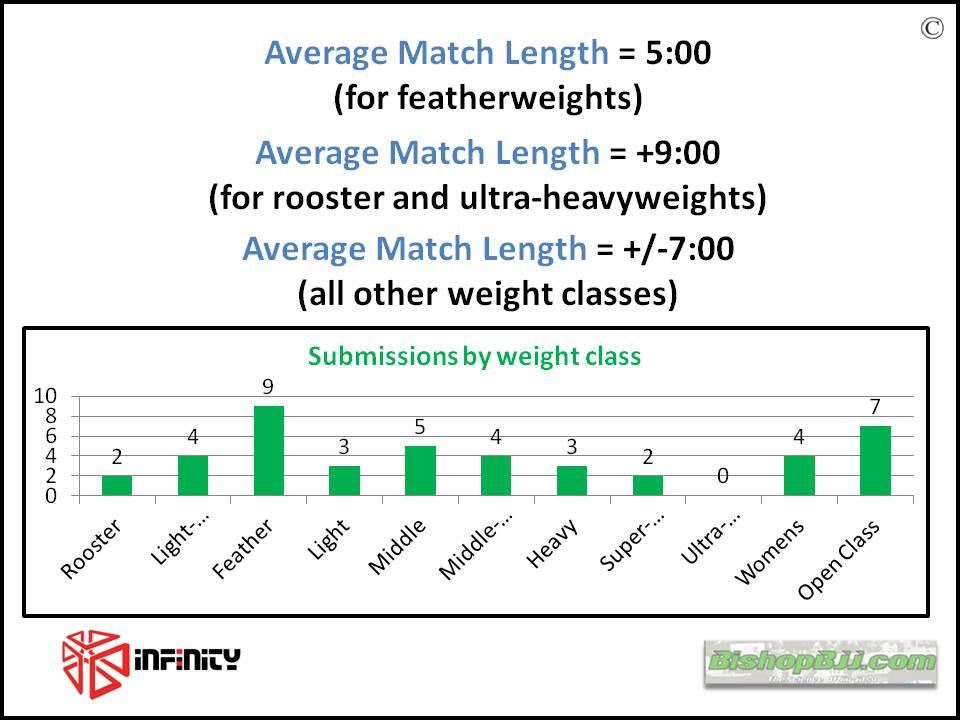
The “BishopBjj.com 2012 World Jiu Jitsu Case Study” is the largest Brazilian jiu-jitsu competition study ever conducted, sponsored by Infinity Kimonos. It includes a collection of over 1,224 different metrics, completed using uniform data collection and reporting methods.
Details

The study collected data during the 2012 World Jiu-Jitsu Championships using the following criteria:
- 90 black belt adult matches across 11 statistically even divisions:
- Rooster
- Light-Feather
- Feather
- Light
- Middle
- Middle-Heavy
- Heavy
- Super-Heavy
- Ultra-Heavy
- Women’s
- Open Class (mens)
- No competitor was surveyed in more than 2 matches to ensure statistical accuracy.
- Matches were recorded in an even cross-section of tournament rounds.
- All matches were recorded in their entirety.
- All match selections were random.
- Matches were all observed using HD tournament footage.
- The report collected detailed information on techniques, results, and trends.
- Recorded and developed by Tyler and Jena Bishop of BishopBjj.com L.L.C.
Abstract
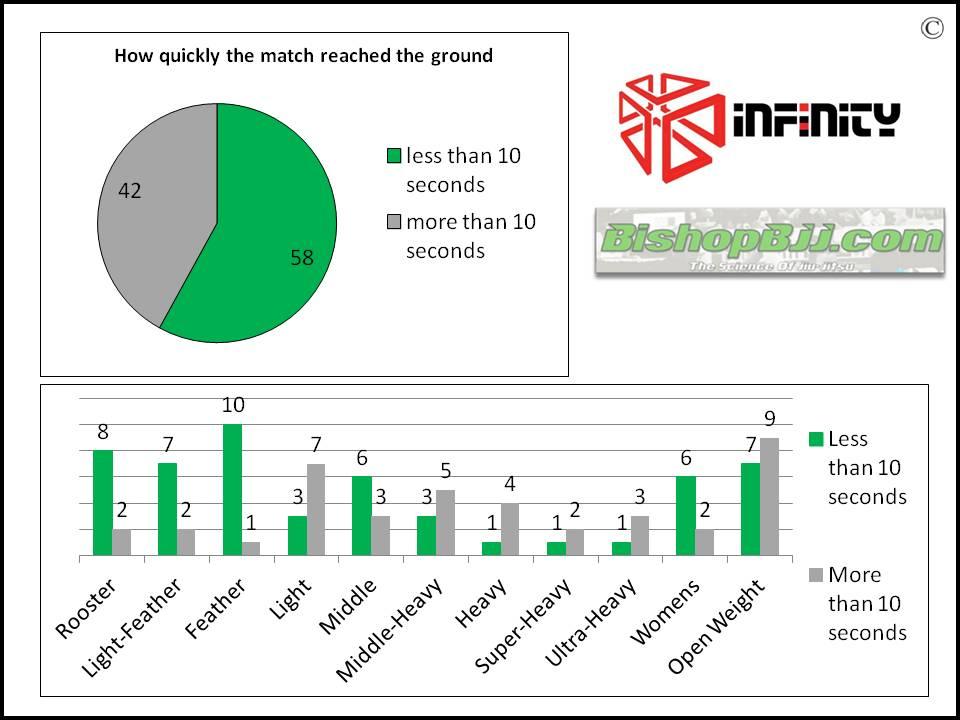
This study was incredibly difficult to produce because it is truly the first of its kind. All standards utilized for this study match uniform processes used in most corporate environments for ROI comparisons. The study is purely empirical, aiming to provide a detailed and unquestionable blueprint for what Jiu-Jitsu looked like at the 2012 World Jiu Jitsu Championship.
Section 1.1
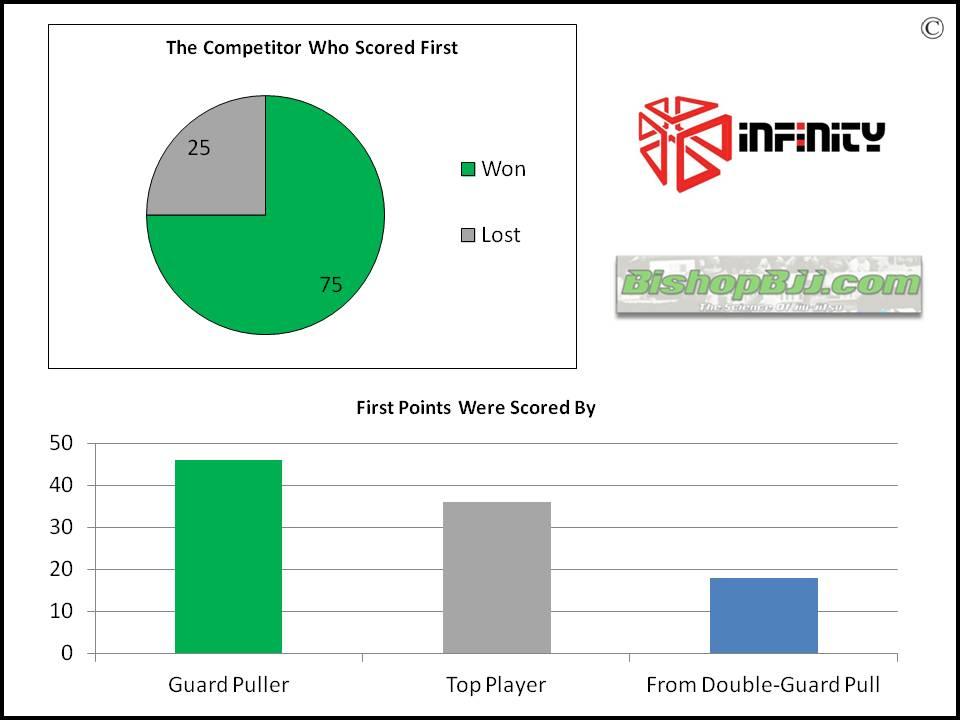
Whether you are a competitor, enthusiast, vendor, or fan, it’s easy to see that Brazilian jiu-jitsu is growing. It’s important to track and measure the sport consistently to avoid forming incorrect opinions about its growth, style, or nature.
Match Outcomes

- Total competition time: 643 minutes
- Average match length: ~7:04 of a possible 10 minutes
- Match outcomes:
- 43 submissions
- 43 wins by points
- 3 referee’s decisions
- 1 disqualification
Observations
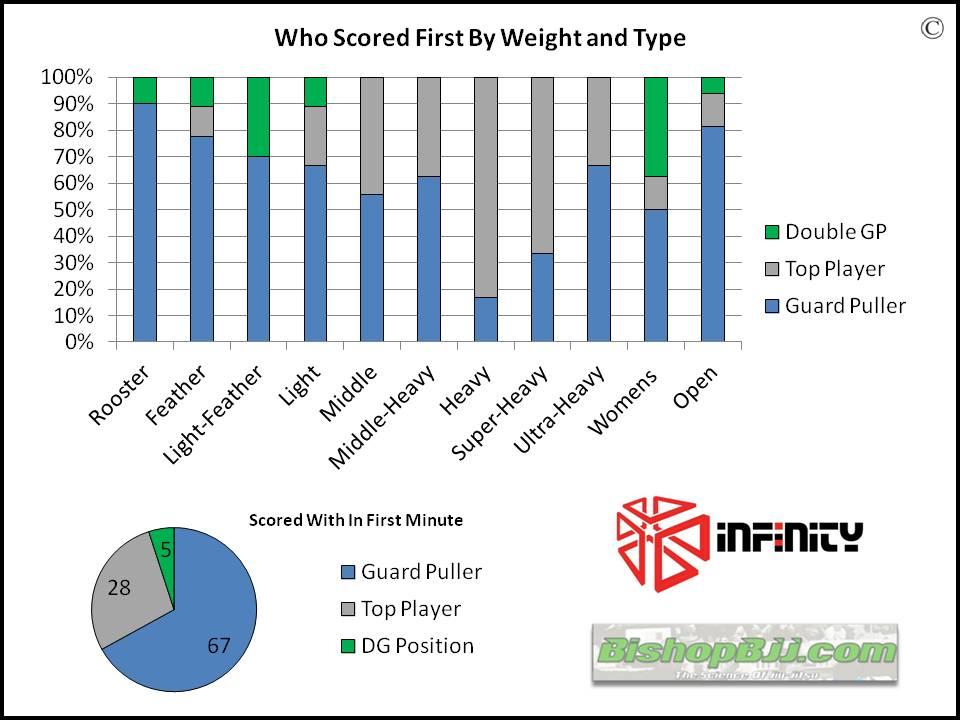
- Submissions were less frequent in the semi-finals and finals rounds.
- Men’s featherweight division had the highest number of submissions (9).
- Men’s roosterweight and ultra-heavyweight classes had the lowest number of submissions (2 for rooster and 0 for ultra-heavy).
- Average match length varied by weight class.
Section 1.2
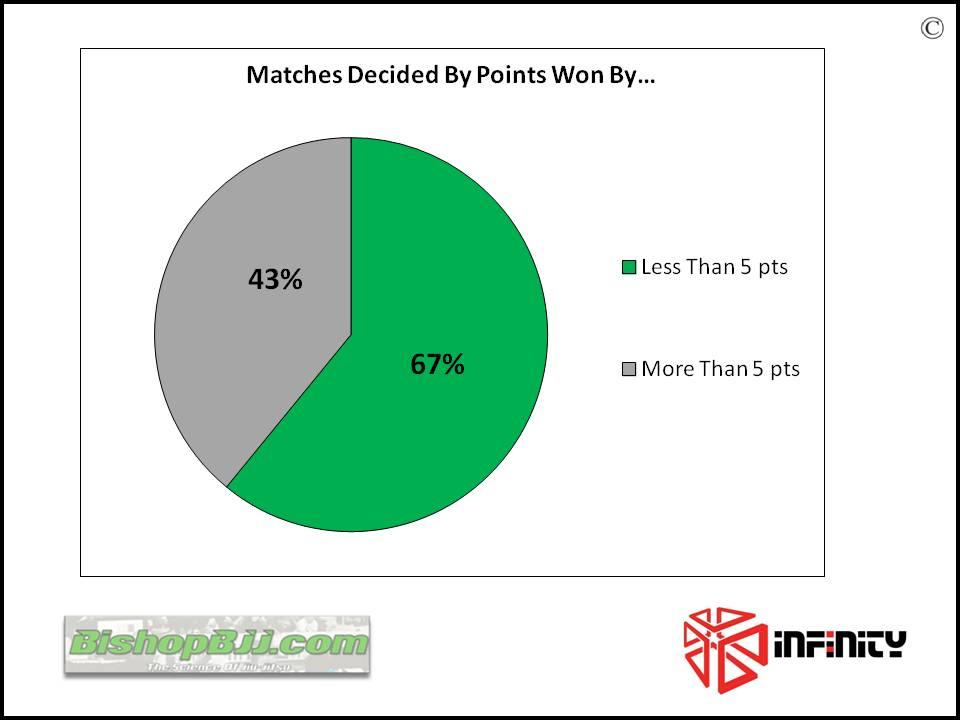
Match Beginnings
- 58% of matches reached the ground in less than 10 seconds.
- Weight class variations:
- 80% of roosterweight matches reached the ground in less than 10 seconds.
- 20% of heavyweight matches reached the ground in less than 10 seconds.
Guard Pulling
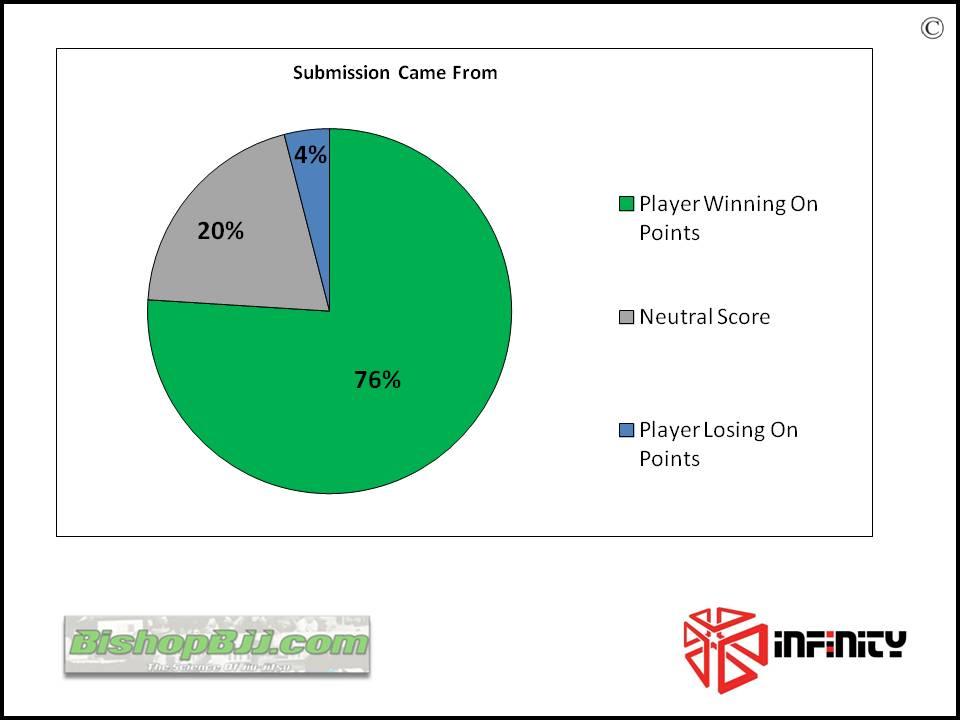
- 66% of matches involved one competitor pulling guard.
- 24% involved one competitor being taken down.
- 10% involved both competitors pulling guard.
- Trends by weight class:
- Lower weight classes: 96% of matches reached the ground via guard pull.
- Heavier weight classes: Guard pulling by one competitor drops to 27%.
Match Outcomes by Guard Position

- 49% of matches were won by the person who pulled guard.
- 40% were won by the person who started on top.
- In double guard pull matches:
- 6% were won by the player who came to the top first.
- 5% were won by the person who stayed on the bottom.
Section 2.1

Points and Match Outcomes
- 75% of matches were won by the competitor who scored points first.
- Guard pullers scored first 46% of the time.
- Players starting on top scored first 36% of the time.
- Points were scored in the first minute in 34% of matches.
- Players who scored with takedown in the first minute won 100% of the time.
Points and Submissions
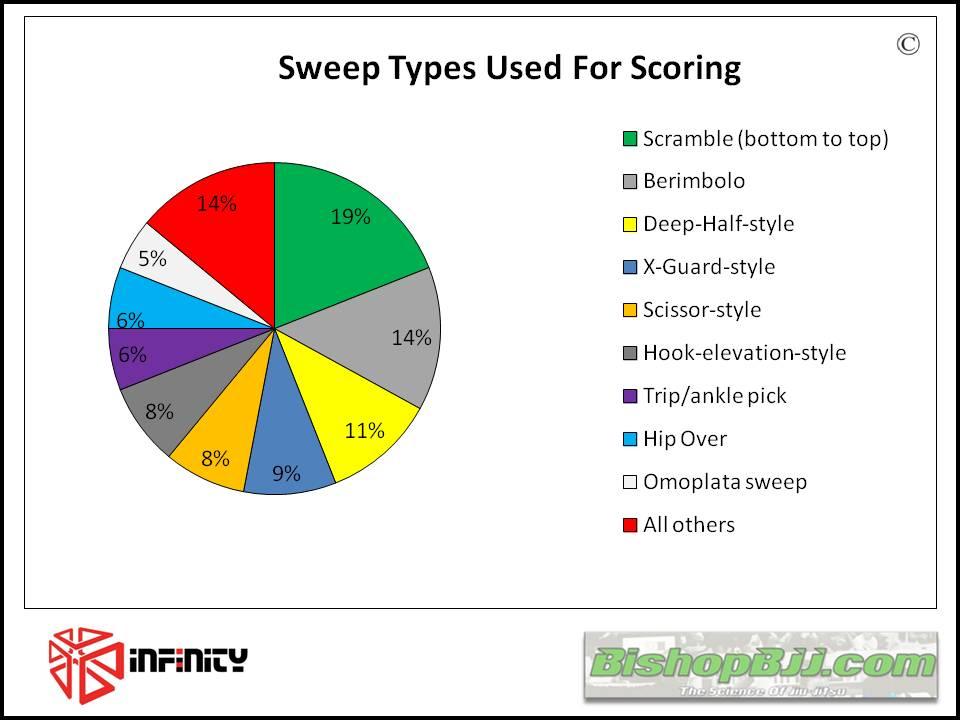
- 76% of all submissions came from the player winning on points.
- 4% of submissions occurred in favor of the player losing on points.
- 20% of submissions occurred from a neutral score.
Section 3.1

Techniques: Passing and Sweeping
- 73% of all points scored were from either a pass or a sweep.
- Passes: 31%
- Sweeps: 42%
- Most common sweep positions:
- Half-guard: 23%
- De La Riva: 20%
- Spider guard: 14%
Passing Techniques

- Standing passes: 43%
- Passes from half-guard: 31%
- Passes from the knees: 26%
- Most successful passing types:
- Leg drag pass: 18%
- Knee through-style pass: 18%
- Knees-together smashing passes: 11%
- Knee-cut passes from half-guard: 10%
- Reverse sitting half-guard passes: 10%
Section 3.2

Back Takes and Submissions
- 40% of back takes occurred while passing guard.
- 27% of back takes occurred from side control.
- Most common submission positions:
- Back: 40%
- Side-control: 11%
- Mount: 11%
- Most common submissions:
- Choke from the back: 35%
- Armbars, footlocks, and cross-collar chokes: 12% each
Conclusion
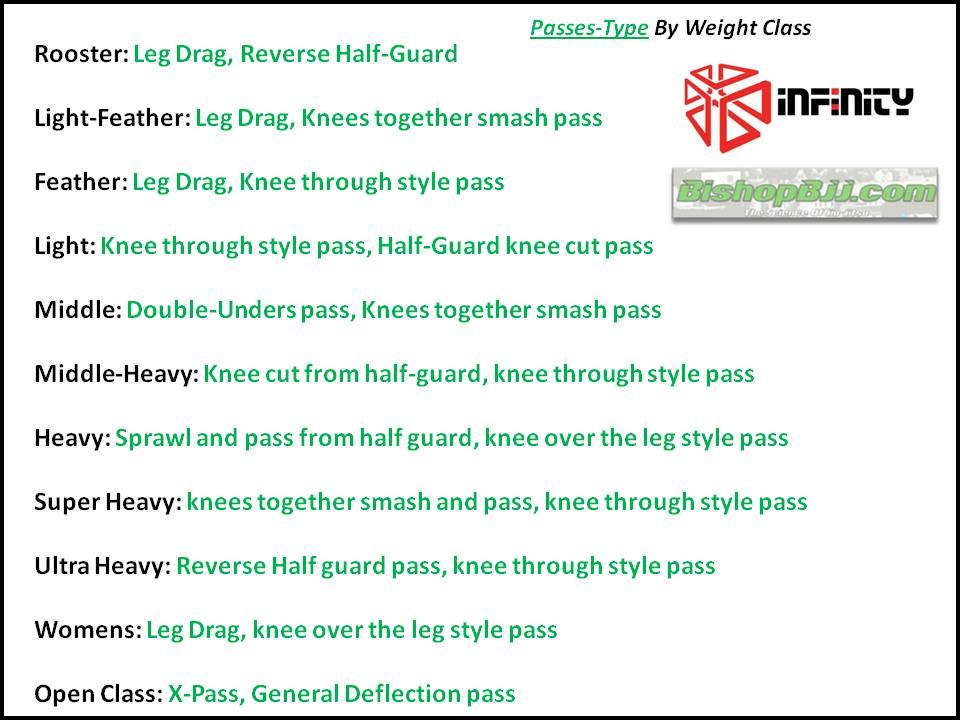
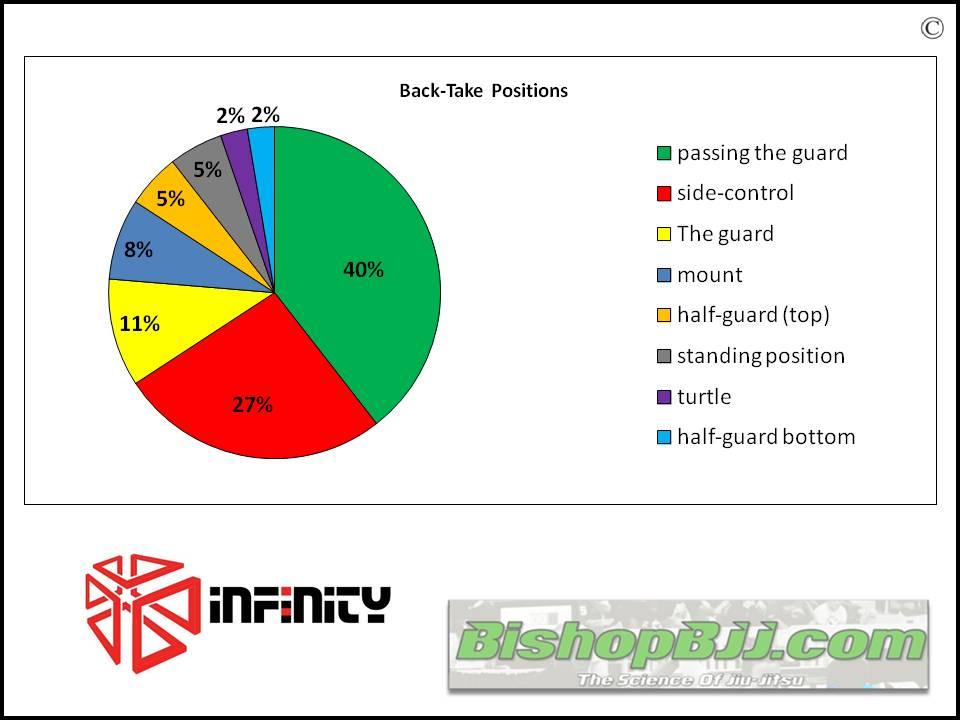


We love Jiu Jitsu at BishopBjj.com and created this study to serve the field. We hope our work makes a difference in the way rules are built, competitors prepare, and success is measured. Please share this study to help spread this material and support the evolution of the sport.
Sincerely,
BISHOPBJJ.COM (Tyler and Jena Bishop)